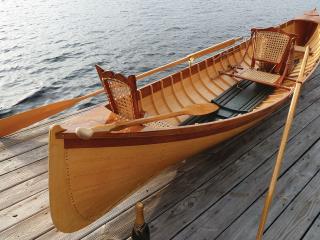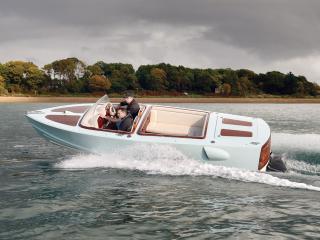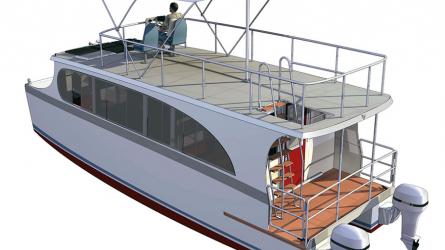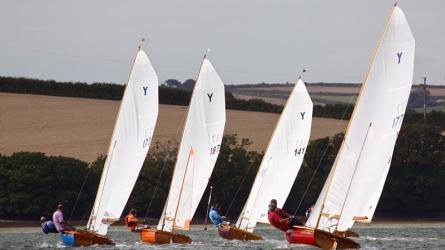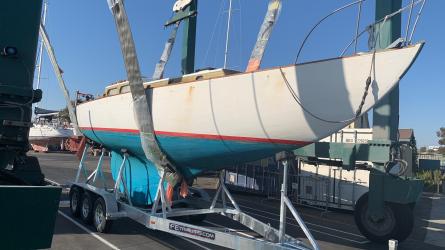May / June 2023
Sharpie Madness
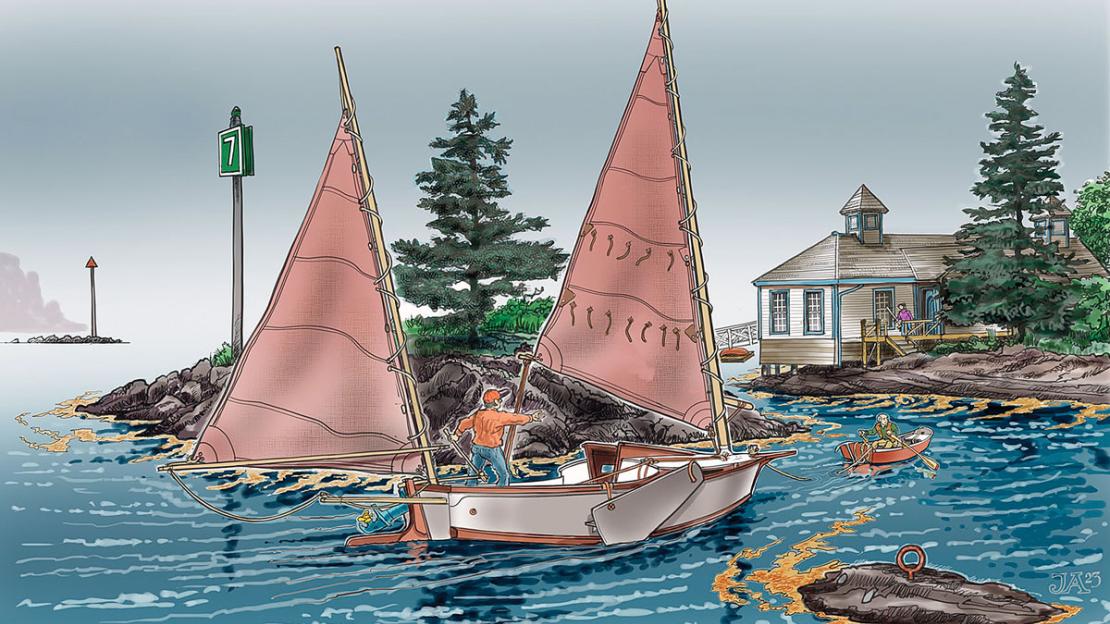
JAN ADKINS
Named for a bird that feeds by skimming, in flight, along the water to scoop up fish, the Phil Bolger–designed Black Skimmer was intended for the tidal creeks of the lower Chesapeake Bay. Author Stan Grayson sailed his in New England waters for several years.
Although I’ve always thought of myself as more or less immune to the influence of advertising, certain books have had a definite impact. Back in the mid-1980s, one such book even prompted me to violate that cardinal rule of boat selection: buy only a boat suitable for your local waters. Years ago, my local waters morphed from the shallow depths of New Jersey’s Barnegat Bay, which is perfect for centerboard catboats, to the rocky but deep waters around Marblehead, Massachusetts. However, such was the influence of Phil Bolger’s The Folding Schooner and Other Adventures in Boat Design that I somehow became entranced by a sailboat whose minimum draft was a mere 10", more or less.
The boat in question was introduced on page 60 of Bolger’s book. The design had been commissioned by a marine scientist and boating journalist named Mike O’Brien, who would later join the WoodenBoat editorial staff, where he remains on the masthead as the magazine’s boat-design editor. Bolger called the design Black Skimmer for a bird that feeds by skimming low with its specially adapted lower mandible in the water to scoop up fish. Black Skimmer’s gracefully rockered flat bottom and wing-like leeboards adapted it perfectly to its intended habitat, the tidal creeks of the lower Chesapeake. One of the book’s photos showed Mike’s boat, which he built himself, resting in the marsh grass waiting for the tide to float it off the mud. It was perfect.
I perused the Black Skimmer drawings so many times that I knew portions of the materials list by heart: “½"-thick plywood hull with double-thickness bottom; trim molding 1" half-round; leeboards 11⁄2"-thick edges well streamlined from about 4" from edge.” In my mind’s eye, I imagined those streamlined leeboards slicing through the water as we skimmed just above a sandy bottom.
The Black Skimmer was still in my thoughts when, in the spring of 1983, I received the latest issue of Nautical Quarterly magazine, edited by my friend Joe Gribbins. Among the contents was an insightful article about Bolger’s work written by Joe himself and accompanied by many beautiful photographs. The images included Bolger’s inexpensive plywood “instant boats” popularized by Harold “Dynamite” Payson. There also were sophisticated, shallow-draft sailing cruisers, a sleek outboard-powered boat, and the fiberglass, leeboard-equipped Dovekie then in production by Edey & Duff in Massachusetts. A Black Skimmer was included, too. It had been capably built on Cape Cod by Walter Barron, who still does business in Wellfleet as the Old Wharf Dory Company. There were three beautiful photos of the boat taken by Benjamin Mendlowitz.
To read the rest of this article:
Click the button below to log into your Digital Issue Access account.
No digital access? Subscribe or upgrade to a WoodenBoat Digital Subscription and finish reading this article as well as every article we have published for the past 50-years.
ACCESS TO EXPERIENCE
Subscribe Today
1 YEAR SUBSCRIPTION (6 ISSUES)
PLUS ACCESS TO MORE THAN 300 DIGITAL BACK ISSUES
DIGITAL $29.00
PRINT+DIGITAL $42.95
Subscribe
To read articles from previous issues, you can purchase the issue at The WoodenBoat Store link below.
 Purchase this issue from
Purchase this issue from

